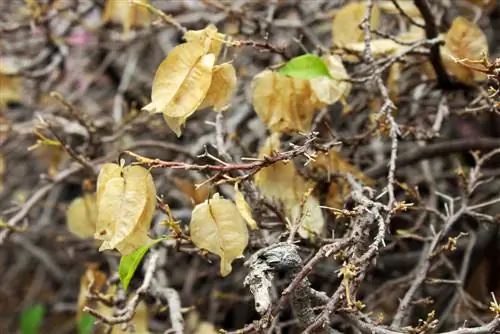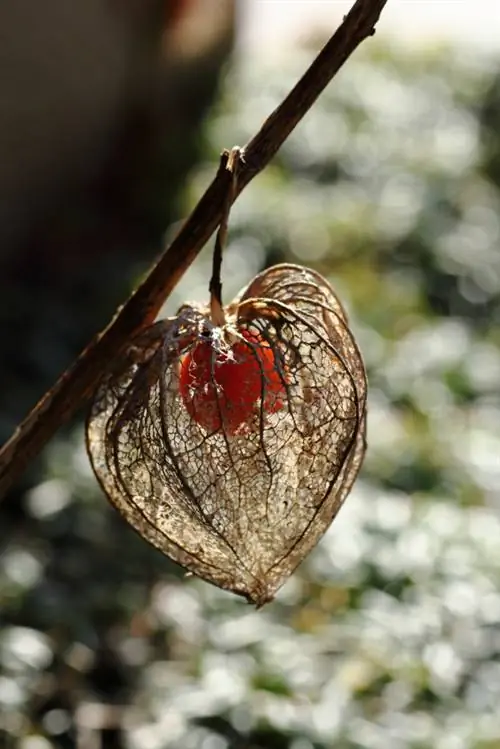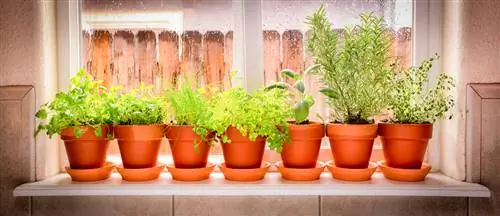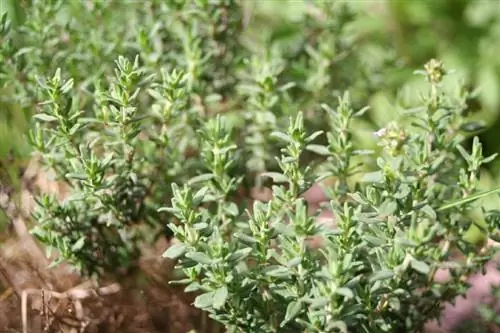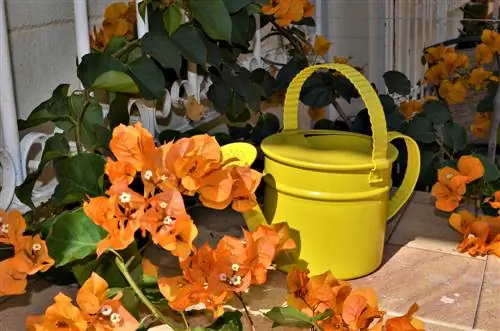- Author admin [email protected].
- Public 2023-12-16 16:46.
- Last modified 2025-01-23 11:21.
Wintering is a standard part of cultivating bougainvillea in northern Central Europe. Not really a problem for a hobby gardener - but there are a few things to consider when it comes to the flower miracle from the Andes.

How should you care for a bougainvillea in winter?
In order to overwinter a bougainvillea successfully, it should be brought into its winter quarters in autumn and not watered. The location should be bright and cool (5-15°C). Before wintering, we recommend cutting back the plant.
Why the bougainvillea needs to hibernate in our area
As a climbing plant from the South American subtropics, bougainvillea doesn't actually know any seasons. At least not four and, above all, no major fluctuations in the light and heat available. If you want to grow the flowery, climbing beauty in our latitudes, you have to adapt it to the local conditions.
In our country, the bougainvillea can only develop a vegetation phase during the brighter half of the year - in winter there is simply not enough light for it. This means that in autumn it should be put into a dormant mode in which it neither grows nor flowers.
So let's keep in mind:
- Bougainvillea is not used to a low-light half of the year in its subtropical homeland
- In winter it should therefore be allowed a rest period
Consequences for cultivation
Cultivation in pots
These conditions result in pot culture for the local bougainvillea fan. The frost-sensitive plant cannot survive the winter months outdoors. In the pot it is mobile and can always follow the available light depending on the location. In the winter it can be easily moved to a suitable place to overwinter.
When we go to winter quarters
When it is time for the bougainvillea to retire for the winter, it will tell you itself. As a rule, it sheds its leaves completely as soon as the light available begins to dwindle massively in autumn.
Another factor is of course the temperature. If you let the bougainvillea grow outside over the summer, you need to pay attention to the first signs of frost in the fall. If nighttime temperatures of 0°C or below are announced for the first time, you should get started as soon as possible. The bougainvillea can usually survive one or two light frost nights, but you can also spare it the cold.
Conditions for winter quarters
In its winter quarters, the bougainvillea is supposed to retreat into a resting mode, but it doesn't completely fall into a coma there. This means that here too it should be relatively bright. Months of darkness can actually cost them their lives. If possible, place them in a bright, cold house or in a large, south-facing window. However, it does not need a lot of warmth to overwinter - 5 to 15°C is sufficient.
No watering during the winter break
In their winter sleep, leave your bougainvillea alone. She should continually reduce her vital forces and not be irritated by any suggestions - that would not suit the lack of light. This also means that you don't need to water during the entire winter break. This would signal the plant to get back on track vegetatively, but the other circumstances are not sufficient for this. Waterlogging is then inevitable - and the bougainvillea gets it particularly badly in winter.
Interim balance sheet:
- Moving to winter quarters when bougainvillea sheds leaves due to lack of autumn light
- At the latest at the first frost
- Winter location as bright as possible in summer
- Temperature between 5 and 15°C is ok
- No watering during the winter break
Measures before and after wintering
Rough cut before billeting
Before bringing it in, it is advisable to cut back the bougainvillea, and not just for reasons of space. If you have let them grow up a wall or railing in the summer, the tendrils will have to be loosened anyway, which usually cannot be done without causing damage. In addition, for vegetative reasons, it is advisable to shorten the long shoots - this way the plant has less substance to supply in low-light mode.
Fine cut after evacuation
When you bring the bougainvillea out again after overwintering, you can give it a fine trim in preparation for its growing phase. Now it's time to thoroughly remove the dead, dried plant parts - and you can also finely sand them for their decorative value. This means that you prepare it for the cultivated form in which you want to keep it: For a tree shape, shorten its crown slightly from below. Grow it as a climbing shrub, lining it up along the trellis (if there is one).
Smooth transition
As we read at the beginning, hibernation is actually an unnatural thing for bougainvillea. With that in mind, it's understandable that she'll need a little time to get back up to speed afterward. The budding after the winter break therefore requires a little patience and sensitivity from the hobby gardener.
In concrete terms, this means: It can take a while until your bougainvillea sprouts its first leaves - until then you shouldn't pressure it with diligent watering or fertilizing. Instead, provide as much light and heat as possible and give it the time it needs.

